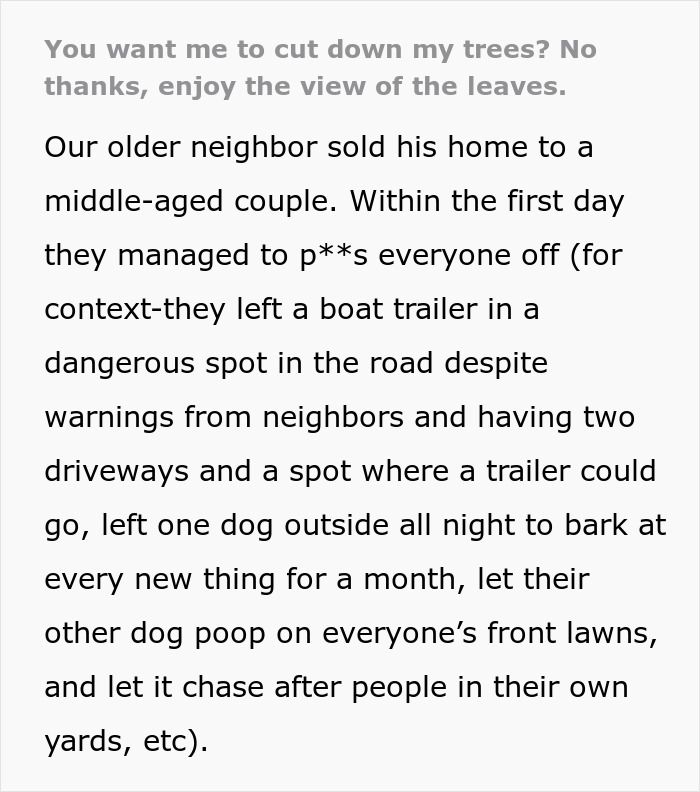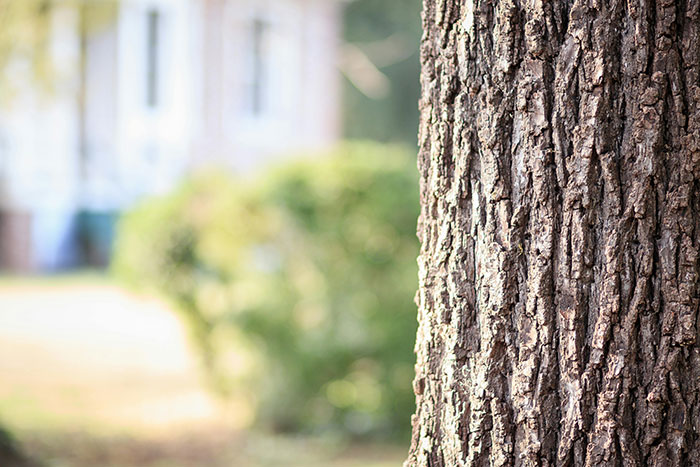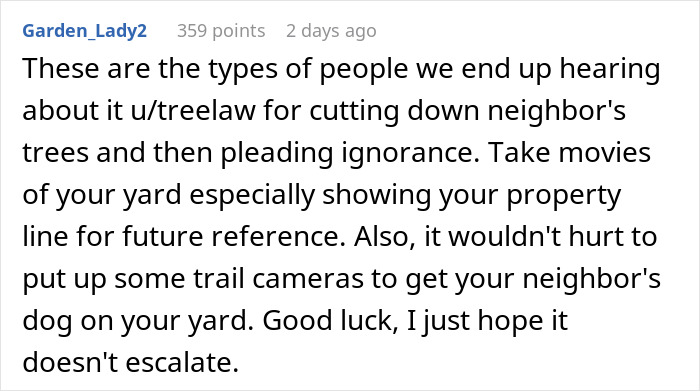It can be beneficial to start on the right foot with the neighbors when moving into a new place. The first impression is essential, and if it happens to be bad, it sets a negative tone for future relationships and interactions, which often makes living in your own home quite troublesome.
This couple’s new neighbors, unfortunately, brought nothing but chaos with them the minute they moved in. But what struck their last nerve was the residents’ demands to cut their trees, which they ignored to get back at them for all the inconvenience they’ve caused thus far.
Scroll down to find the full story and a conversation with ISA-certified arborist and owner of Arborist Halifax, Tim Spence, and ISA-certified arborist and owner of The Tree Nerds, Dennis Baum, who kindly agreed to talk with us all about trees and neighbors.
The first impression of new neighbors can break or make the relationship with fellow residents

Image credits: edb3_16 (not the actual photo)
Unfortunately, these new dwellers brought nothing but chaos the moment they moved in, ruining any chance at friendship with their neighbors



Image credits: LightFieldStudios (not the actual photo)



Image credits: tiredofthebs23
Twice as many people say they have a closer relationship with trees than with their neighbors
University of Ferby research revealed that twice as many people (16%) say they have a closer relationship with trees than with their neighbors (7%). Perhaps that’s why disputes between neighbors who want to cut down trees on property lines and those who want to save them are quite common, as, according to the study, many adults appreciate trees and have a strong connection to nature.
To learn more about greenery on property lines and what neighbors can do about them, Bored Panda reached out to ISA-certified arborist and owner of Arborist Halifax, Tim Spence, and ISA-certified arborist and owner of The Tree Nerds, Dennis Baum.
It turns out, in most cases, neighbors can’t demand that fellow neighbors cut down their trees just because it’s blocking their view, as it happened in this story. “The right to a view is typically not protected by law unless a specific easement or agreement exists between the neighbors. Without such an agreement, a tree owner is not legally obligated to cut down a tree simply because it blocks a view,” says Spence.
Baum notes that “individual states, cities, historic districts, and even HOAs (Home Owner Associations) have their own rules about trees. It’s possible that your property value is being severely impacted by your neighbor’s trees blocking your view, but demanding that they cut down trees is obviously a terrible idea. If you approach your neighbor in a friendly manner and offer to pay for the trimming or removal, things will probably go a lot smoother.”

Image credits: David Vig (not the actual photo)
“Branches over your property are technically your branches, even if the trunk is somewhere else”
In case tree branches are overhanging property lines, experts say that neighbors are usually allowed to trim what is in their yard, even if they don’t own it. This can, of course, vary from case to case.
“Laws vary between countries and even between local jurisdictions, so it’s crucial to check local regulations. In Canada (where I’m based), most provinces, except Quebec, follow the “self-help” rule. This allows property owners to trim overhanging branches up to their property line, provided the trimming does not aim to harm or kill the tree,” says Spence. “In Quebec, however, permission from the tree owner is required before any trimming, to avoid potential legal liability for damages. Always proceed cautiously and consult a local arborist, municipality, or legal expert if you’re unsure about the rules in your area.”
“Even if the tree trunk is clearly on your neighbor’s property, in most areas you can trim branches that reach over the property line,” agrees Baum. “Your property line extends straight up and straight down. So branches over your property are technically your branches, even if the trunk is somewhere else. Always make sure to follow local ordinances, many trees are protected. A local arborist will know what you can do,” he says.
Meanwhile, the owner doesn’t have much responsibility for something that is outside of their property, experts say. “In many cases, tree owners are not obligated to take action unless the overhanging branches pose a clear risk, such as the potential to cause property damage or injury. If the neighbor notifies the tree owner of such risks and provides a professional arborist’s report documenting the hazard, the tree owner may bear some liability if they fail to address the issue and damage occurs due to negligence,” Spence explains.
He concludes by saying, “In general, it’s best to maintain open communication with your neighbor to find an amicable solution. Consulting a qualified arborist and understanding your local regulations is key to resolving disputes effectively and avoiding legal complications.”

Image credits: Michael Morse (not the actual photo)
The author provided more information in the comments




While readers warned the author of all the things the neighbors might think of doing


























